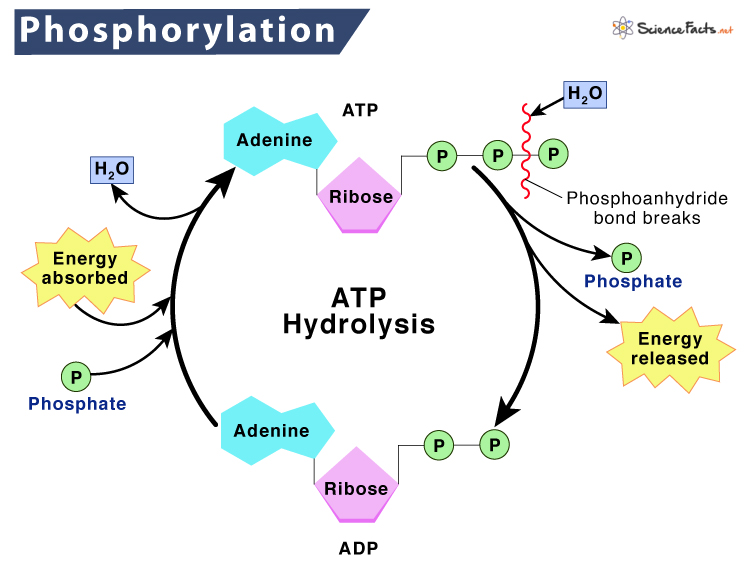Its reverse process is called dephosphorylation, where the added phosphate group can easily be removed again. What Happens in Phosphorylation To understand the process better, let us take the example of ATP hydrolysis. In this process, first the phosphoanhydride bond of the last phosphate group of ATP breaks due to the action of water, thus forming ADP. This process releases some energy. In the next step, the phosphate group gets added to this ADP using the released energy, thus forming ATP again. This ATP-ADP cycle goes on, where phosphorylation and dephosphorylation occurs simultaneously.
Types
Purpose: What does Phosphorylation do
1. Substrate-level Phosphorylation/Glucose Phosphorylation
It is a metabolism reaction, where a phosphate group from a substrate gets directly transferred to ADP or GDP, producing ATP or GTP. It occurs in certain steps of glycolysis and Krebs cycle.
2. Protein Phosphorylation
Protein phosphorylation occurs as the amino acid gets attached to a phosphate group. Generally, the amino acid that takes part in phosphorylation is serine. However, the threonine and tyrosine amino acids in eukaryotes, and histidine in prokaryotes, also take part in the process.Here, the phosphate group interacts with the hydroxyl (-OH) group of the amino acid side chains and gets attached covalently. The exact mechanism of protein phosphorylation varies considerably among prokaryotes and eukaryotes.
3. Oxidative Phosphorylation
The chemical energy released and absorbed by a cell is carried out through oxidative phosphorylation via the electron transport chain and chemiosmosis. In this process, the electrons get transmitted into he inner membrane of mitochondria by passing through several redox reactions of electron transport chain. As a result, some energy is produced that helps to create adenosine triphosphate (ATP) in chemiosmosis.
